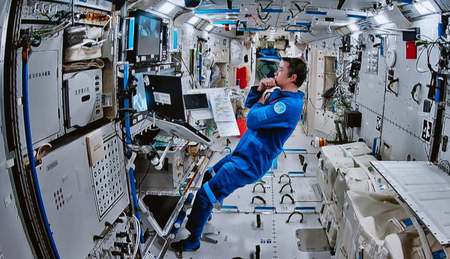The night in orbit just leaves truce. In low orbit, the Tiangong Space Station It becomes the scene of a constant activity that requires millimeter precision. In the last extravehicular exit, Chinese astronauts had to face a challenge that does not come from technical failures or scientific experiments, but from a silent enemy that multiplies the risks of each mission: the space garbage that accumulates in the low terrestrial orbit and threats to hit the structure of the complex.
The schedule of China’s manned flight agency places the start of extravehicular activity on September 25 at 19:45 (Beijing time), with Wang Jie as the first astronaut to leave the Wentian module. It was followed shortly after Chen Zhongrui, in charge of attending the installation of the equipment. Chen Dong, from inside Tiangong, managed communications with the control center and supported his teammates throughout the maneuver. The walk concluded at dawn, at 1:35 of September 26, when the two crew closed the hatch after completing the planned agenda. The maneuver was carried out with support from the robotic arm of the station and the team on land.
Sludes against fragments: Tiangong’s strategy to resist in space
During the walk, the main objective was to install a protection device against Orbital fragmentsdesigned to reinforce the most exposed areas of the station. The operation also included the review of the state of external equipment and structures, with special attention to the systems that suffer greater wear due to continuous exposure to the spatial environment. According to those responsible for the program, this installation and maintenance combination seeks to ensure that Tiangong maintains its operational capacity in the middle of an environment increasingly saturated with remains.
The increase in spatial garbage in the low orbit is one of the factors that most worries agencies in recent years. Each launch adds fragments that, although small, reach speeds that multiply their damage. For China, reinforcing Tiangong does not respond to a specific incident, but to the need to get ahead of an increasingly complex scenario.
China is not the only one that has had to reinforce its station in the face of the threat of orbital fragments. The International Space Station has for years with specific armor systems, known as anti-MOD shields, which protect its habitable modules from impacts from impacts Micrometeoritos and space garbage. The difference is in the context: it is an infrastructure with more than two decades of service, which has needed to adapt continuously to an increasingly congested environment. In the ISS, this philosophy materializes in shields in Whipple and Stupfed Whipple layers, with several hundred shields distributed in critical areas.

The comparison between Tiangong and the International Space Station helps to understand the scope of its protection systems. The Chinese station completed its construction in 2022 with a T configuration formed by the Tianhe, Wentian and Mengtian modules. The ISS, on the other hand, began to assemble in 1998 and ended its main segment in 2011, with a much broader and more complex structure. This difference in dimensions and seniority explains why its shields follow different logics: ISS combines protections included from its design with reinforcements added over the years, while Tiangong integrates solutions designed from the beginning for a more congested environment.
The closure of this extravehicular activity does not imply a break, but the beginning of a new stage for the Shenzhou-20 mission. The three astronauts will continue with numerous scientific experiments and technological tests, in addition to participating in on -board celebrations linked to the Chinese calendar. The installation of additional shields has a clear objective: to hold over time the crew safety and the integrity of Tiangong, which aspires to consolidate as a stable basis for space research in the midst of a more demanding orbital environment.
Images | Xinhua
In WorldOfSoftware | 24 years ago, the earth was symmetrical. Now the northern hemisphere is “unequivocally” darker than the southern hemisphere
